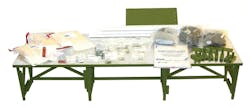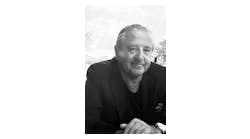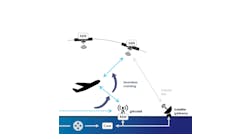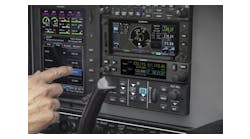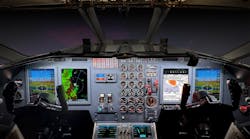Recently I was touring a new MRO facility and the host managers were discussing authorized repair capability, PMAs and expediting STCs, and I recognized that it was time for refresher training on the definition and applicability of those acronyms. A document search located some standard definitions: PMA - Parts Manufacturer Approval “is an approval granted by the FAA to a manufacturer of aircraft parts. PMA-holding manufacturers are permitted to make replacement parts for aircraft, even though they may not have been the original manufacturer of the aircraft.” STC - Supplemental Type Certificate “is issued when an applicant has received FAA approval to modify an aircraft from its original design.”
When reading regulatory documentation I usually start to drift after about 10 minutes so my preferred learning method is listening to an expert explain how these processes play out in the actual work environment. One segment of our industry that consistently deals with these approval processes are companies that overhaul, modify, and repair airframes and install custom aircraft interiors on corporate jets.
Aviation Fabricators (AvFab) is one of those companies and Jeff Lowe is experienced in obtaining STC and PMA approvals for their production items. Jeff and his father G.R. began operations at their Clinton, MO, facility in 1988 and now have 24 employees.
PMA and STC approval processes
Necessity and profitability appear to be the two reasons why companies pursue STC and PMA authorization. I asked Jeff if he could start at the beginning and provide some insight and detail about the authorization process that AMTs don’t normally get when we pull a kit or part for a job assignment.
According to Jeff, “Pursuing and getting authorization to make a change or reproduce an aircraft part is an arduous task so we don’t begin the process unless a real need has been defined. All process steps have to be completed before applying for regulatory approval to produce aircraft parts. It is time-consuming, costly, and requires considerable data collection, pre-production work by specialist(s), then careful analysis and decision making.”
Speaking to necessity, Jeff explains, “We are constantly challenged to help keep our MRO and Completion Center’s customers’ planes flying as economically and safely as possible. In reality, for any OEM to support everything that ever appeared in their Illustrated Parts Catalog (IPC) is impossible and they would probably go broke if they kept every part in stock for every model of aircraft they ever built. In the case of PMAs, we are not looking to reinvent the wheel, we’re simply trying to duplicate a part to the same quality or above as the original part and at a profit.”
As for profitability, the applicants take all the risk because most of the cost of getting an STC or a PMA is front-loaded. “There is material testing, drafting, engineering analysis, prototype building, compliance and conformity procedures, and production setup costs (not to mention marketing and overhead). We must determine how real and significant the need in the field is, so we can determine an amortization amount for our investment when obtaining the PMA. Time and resources have to be justified. On average it takes nine months to a year to obtain an STC approval and add that to the PMA listing. In the past few years we have received around 10 PMA approvals for replacement parts and probably 15 STC approvals which were also added to our PMA list.”
When asked to discuss the difference between a PMA and an STC authorization, Jeff explains that there are “some similarities and some significant differences. The development process for getting an STC authorization is similar to a PMA development but the scope and scale of the effort is much greater. Accordingly, the need for an STC typically comes when there is no product that meets a need. It’s usually not a replacement part; it’s a new concept. With the STC, a whole new realm of considerations must be included. How can we best design this product for safety, comfort, weight, installation, removal, and value?”
Prototypes, approval, and conformity
“The STC applicant has the option (in most cases) of justifying their design by an engineering analysis or by testing. If engineering analysis is chosen, a factor of 1.3 must be used as a safety buffer. In other words, if the aircraft requires 9G forward loading conditions for seats, then the engineering analysis must prove the design to be 1.3 times 9G, or 11.7G. The design is frozen once it has cleared all obstacles and passed the engineering or testing requirements. Once the decision is made to go forward, the design is executed and a prototype built, sometimes followed by several more iterations.”
The next step is to submit the project to the FAA or EASA for their review. When asked if the same AvFab team develops and manages the application process, Jeff says, “Yes, we are always the point of contact with the FAA. Some projects require a lot of communication and interaction with the FAA, and some are fairly straightforward. Occasionally when the project is extremely complex, we hire a “Management Designated Engineering Representative (DER)” to oversee the project. A DER is an expert in the approval process and is recognized and trusted by the FAA. The DER oversees the process for the customer (AvFab) and submits a Form 8110-3 to the FAA recommending that a product be given approval. This helps the FAA expedite the approval.”
I asked him if they always work with the same FAA department and team for approvals. “All of our STCs go through an Aircraft Certification Office (ACO) in Wichita. We have an assigned project manager there and the review process begins with him.”
“Once the data package has been blessed by the ACO, the final step in the STC process involves conformity inspections. The first item or kit is manufactured and the FAA will perform a conformity inspection. This is primarily to ensure that the product actually matches the drawing, or is what we say it is. The installation conformity test will follow to ensure that the installation instructions are accurate. Flight testing, when required, is typically accomplished in conjunction with the installation conformity. Normally we’ll use a customer’s or sometimes we are able to use our airplanes for the flight test. After all of the i’s are dotted and t’s are crossed, awarding of the STC is imminent.”
I read that in June AvFab received STC approval from European Aviation Safety Agency (EASA) for its Beechcraft 400A three-place divan. The new STC allows installation of the two- and three-place divans in all Beechjet and Hawker Beechcraft 400 and 400A series aircraft. Asked if there were differences for getting STC approvals by the FAA and EASA, Jeff replies that EASA might come back with questions but typically the FAA STC is approved by EASA “as is”. One difference is EASA charges for its services.
Parts production
After about nine months and with approvals granted, the replacement part, kit, or new item is added to the PMA list which allows companies to mass produce the items within their own quality control system. When the items are shipped, whether it’s a PMA replacement part or an STC new product, all documentation and authorizations are included. Once the item is produced to a certain number or level to allow for customer customization it is presented to key high volume customers and turned over to the ad agency for marketing.
Jeff helped debunk some industry myths and gave me a better understanding of why companies get PMAs and STCs for aftermarket parts and new items. The path to producing an aftermarket product or making a change to the aircraft Type Certificate is long and rigorous with high standards and not always about the bottom line. It was apparent that AvFab strives to meet the needs of its customers, help make maintenance operations more efficient, and our industry safer through improvements in design and products.
Charles Chandler began his aviation career as a junior mechanic for American Airlines and retired after 27 years of service. He has a Master's of Science degree in adult and occupational education with a major in human resources development.
